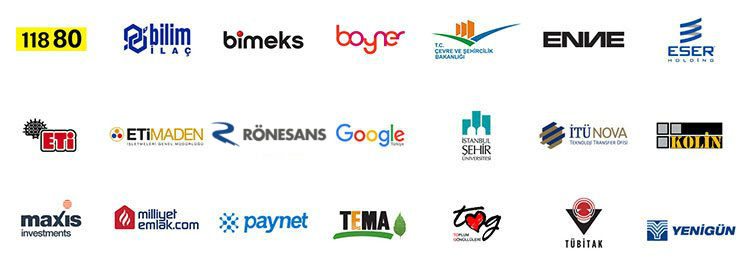
An efficient procurement process is the circulatory system of an organization; it moves resources to the right place at the right time, keeping the business healthy and operational.
But even the smallest clot or blockage in this system can slow down the entire operation.
These blockages, or bottlenecks, often go unnoticed, but their effects are felt throughout the entire company.
The Invisible Walls: The Bottlenecks Slowing Down Procurement
The core problem is that procurement processes are often filled with unseen inefficiencies.
Slow-moving approval chains, hours lost to manual data entry, poor inter-departmental communication, and complex requisition steps build invisible walls that slow the process to a crawl.
These are not just minor delays.
These bottlenecks are systemic problems that halt progress, frustrate stakeholders, and keep the procurement team from performing strategic tasks.
The Cost of Delays: The Price Beyond Inefficiency
The impact of these bottlenecks goes far beyond just lost time.
Research shows that process inefficiencies can waste nearly a third of an employee's time, which translates to losing more than 70 workdays per employee every year.
The financial and strategic cost of this is much heavier.
Delayed projects lead to budget overruns and missed market opportunities.
A consistently slow process damages the procurement department's reputation internally, causing it to be seen as a "blocker."
Stakeholders, trying to get their work done on time, turn to unapproved channels, which increases maverick spend.
Ultimately, the procurement team is stuck constantly fighting fires, unable to focus on the strategic optimization work that creates real value.
Ensuring Flow: A Guide to Identifying and Eliminating Bottlenecks
You can tear down these invisible walls and transform procurement from a blocker into a business accelerator.
This requires carefully analyzing your workflows, finding the weak points, and taking targeted steps to eliminate them.
Here is a strategic roadmap to streamline your procurement processes and break free from bottlenecks.
What are common bottlenecks in the procurement process?
The most common bottlenecks often appear in approval processes.
Complex approval chains with too many or slow-to-respond approvers can halt a process for weeks.
Other common bottlenecks include manual data entry, scattered supplier information, unclear requisition specifications, and poor communication between departments.
Recognizing these problems is the first step to solving them.
Step 1: Map Your Current Process
Before you can improve your process, you need to clearly understand its current state.
Create a visual map of your entire procure-to-pay cycle, from requisition creation to invoice payment.
You can use techniques like swimlane diagrams or simply start with a whiteboard and sticky notes.
Document each step, the people/departments involved, the systems used, and the average time each step takes (both active work time and waiting time).
This mapping exercise often clearly reveals how different the process is in practice versus in theory, and where the delays are accumulating.
Step 2: Identify Bottlenecks and Root Causes
With your process map in hand, identify the steps with the longest wait times.
These are your bottlenecks.
Once you've identified a bottleneck, it's critical to ask, "Why?"
Use a technique like the "5 Whys" analysis to get to the root of the problem.
For example, "Why are approvals taking so long?" "Because managers are busy." "Why are they busy?" "Because they have to approve too many unnecessary requests." "Why do they have to approve so many?" "Because the policy requires approval for everything over $100."
This root cause analysis allows you to address the heart of the problem, not just its surface-level symptoms.
How do you analyze and improve a workflow?
To analyze a workflow, first visualize it step-by-step (map it).
Then, collect data for each step: completion time, error rates, and the number of personnel involved.
Look for opportunities for improvement in these areas:
-
Redundant Steps: Identify any tasks that are repetitive or add no value.
-
Manual Transfers: Find points where information is manually entered from one system or person to another.
-
Waiting Times: Pinpoint the dead time spent waiting for approvals or feedback.
To improve, aim to eliminate these redundant steps, reduce manual tasks with automation, and simplify approval chains.
Step 3: Implement and Standardize Solutions
Once you understand the root causes, you can implement targeted solutions.
Leverage Automation: Use eProcurement software to automate repetitive tasks like requisition routing, approval reminders, purchase order creation, and 3-way matching (PO-invoice-receipt).
Simplify Approval Processes: Accelerate low-cost purchases by setting value-based approval levels. Eliminate the need for approvals on routine purchases by creating pre-approved supplier catalogs.
Standardize Communication: Prevent delays caused by missing information by creating standard tools like requisition forms, Request for Proposal (RFP) templates, and contract drafts.
Make every improvement you implement the new Standard Operating Procedure (SOP) for the entire team.
How do you get stakeholder buy-in for process change?
Getting stakeholder buy-in starts with transparency and communication.
First, use data to show the problems the current process is causing and how it negatively affects their departments.
Next, clearly explain the benefits the proposed solution will bring to them (e.g., faster turnaround times, less manual work).
Involve them in developing the solution and ask for their feedback.
Finally, proving the success of your proposal with a small pilot project is the best way to persuade them for a broader change.
Step 4: Measure Results and Continuously Improve
Improvement is not a one-time project; it's a continuous cycle.
Establish Key Performance Indicators (KPIs) to measure the impact of the changes you've made.
Compare metrics like cycle time, cost-per-transaction, or stakeholder satisfaction before and after the change.
Share the results with your team and leadership to demonstrate success and gain support for the next area of improvement.
This culture of continuous measurement and improvement ensures your processes become even more efficient over time.
Conclusion: Not a Blocker, an Accelerator; The Power of Optimized Processes
Streamlining your procurement processes means much more than just saving a few minutes or hours.
It's about transforming the procurement department from a bottleneck into a strategic accelerator that enables the entire business to move faster and more effectively.
When you eliminate bottlenecks, you give your team the opportunity to think strategically and create value.
This means less frustration, higher efficiency, and ultimately, a more profitable business.







